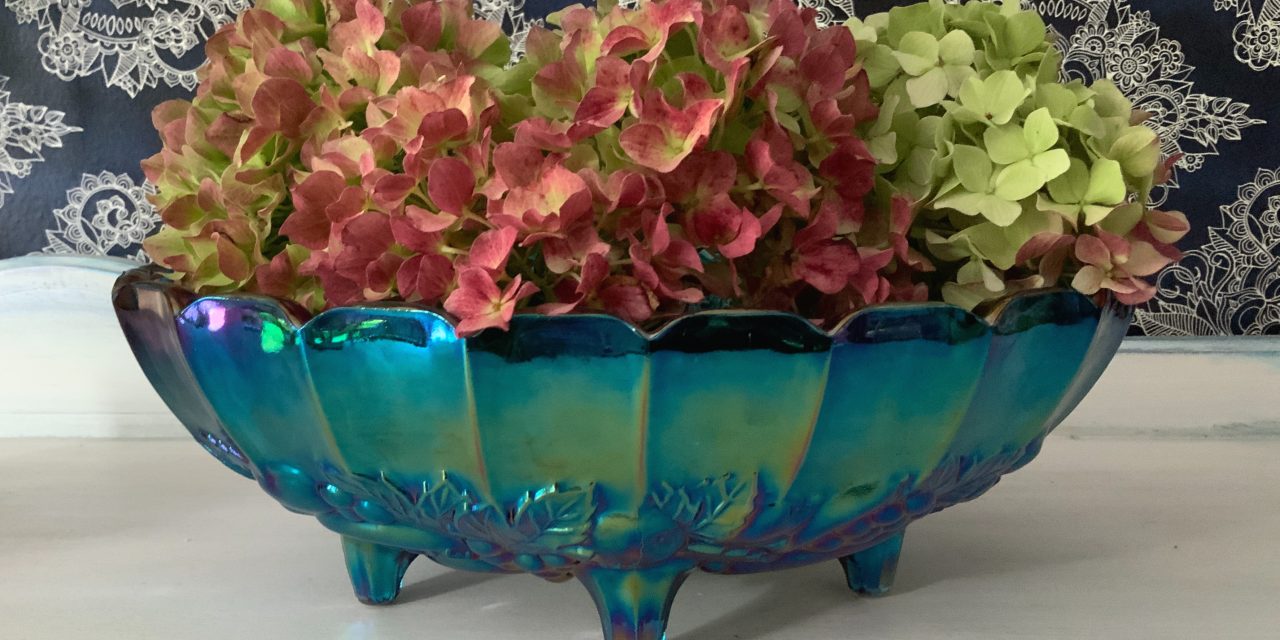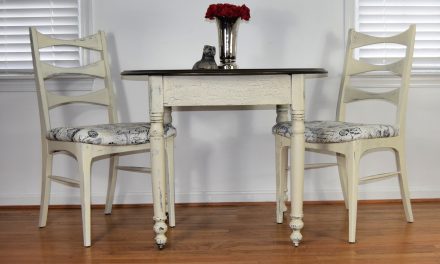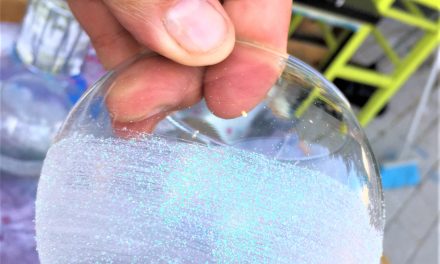Imagine you are at a carnival.
You throw a beanbag to knock over a stack of wooden bowling pins. They all come crashing down—except for that last stubborn pin. It wobbles back and forth a bit before finally toppling over with a satisfying clunk.
You win! Hooray!
And your fabulous prize is … a colorful glass bowl.
(You were expecting a giant stuffed animal, weren’t you?)
Back in the early 1900’s, “carnival glass” bowls and vases were popular prizes at carnivals and fairs. Created in all different sizes, styles and colors, carnival glass can be recognized by its distinctive iridescent shimmer.
I sure felt like a winner when I found two beautiful carnival glass bowls on my recent trip to the Fairfax, VA Goodwill store.

The larger bowl cost $19.99 while the smaller one was only $4.99. I later found the exact bowls on eBay, only the larger one was $33 and the smaller one was $19.99.
I got a great deal at Goodwill!
These types of bowls with the base and stem are called compotes. They are used to serve fruits, nuts or sweets. I think they look pretty with late-summer hydrangeas cut from my front yard.

I first learned of carnival glass a few years ago when my mom brought me this bowl as a souvenir from her trip to the World’s Longest Yard Sale. This bowl has a grape leaf design on the bottom and sits on fancy little feet. I love how the colors shimmer when the light hits it just right. My Goodwill compote bowls match it perfectly. Now I have a carnival glass collection!

First produced by the Fenton Glass Company in 1908, carnival glass is made by pouring hot glass into a mold then adding metallic salts and firing it again. The salts bring out the iridescent shine. The base glass came in many colors like blue, green and a clear glass that turns a lovely golden or copper color when fired. This is now called marigold and is the most common carnival glass color.
A few weeks after my Goodwill trip, I found a little marigold carnival glass dish on a local Facebook group to add to my collection.

Many companies manufactured carnival glass in the United States at the height of its popularity in the early 1920’s. Production declined by the 1930’s, but the pieces are collectible today at varying price points depending on how rare the design is.
Not all carnival glass pieces were won at carnivals either. Most were purchased to decorate homes, a low-cost alternative for families who could not afford exquisite blown glass like the famous Tiffany glass.
I like to think about my little bowls in somebody’s home 100 years ago. Did they love how the colors shimmered when the light hit it just right? Did they use the bowls on special occasions to serve nuts or candy? Or were they strictly for decoration?
On a late summer day, did they cut hydrangeas from their yard to put in the bowls?
I sure hope so.
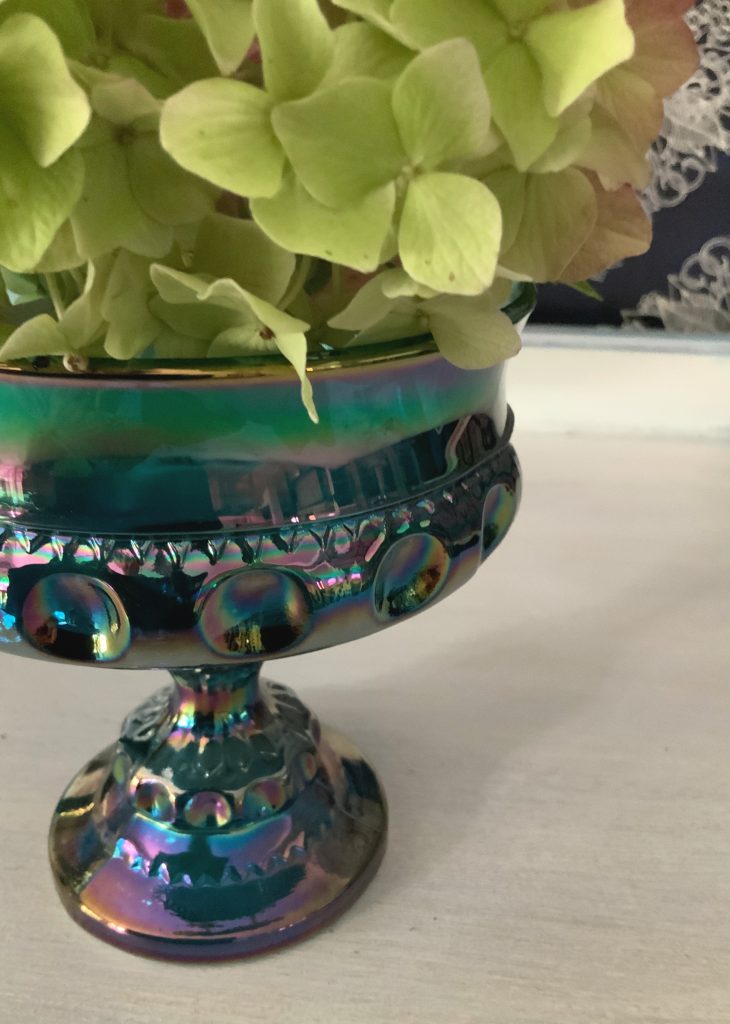
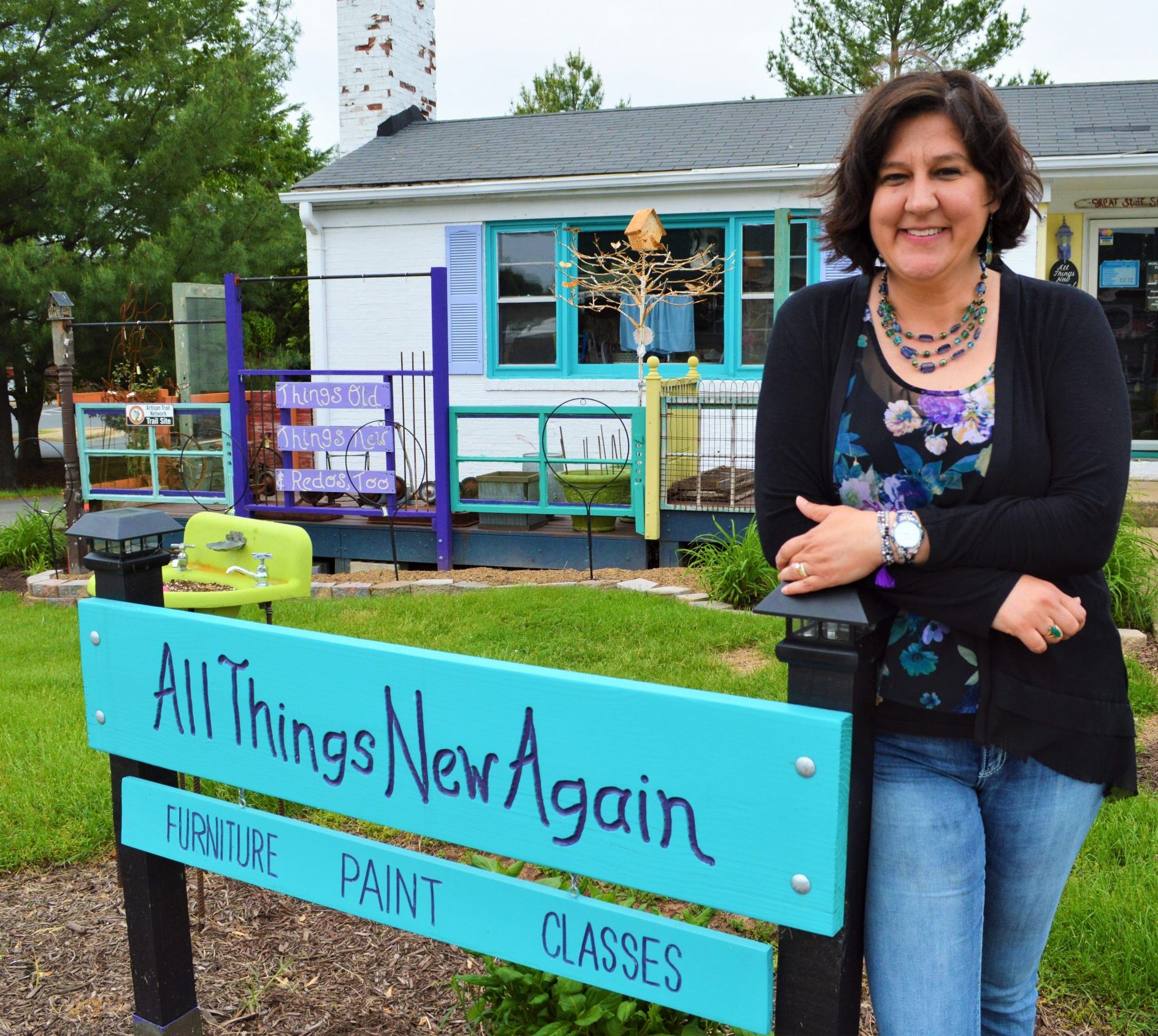
Courtney Mickalonis
Artist/Teacher/Blogger at All Things New Again


